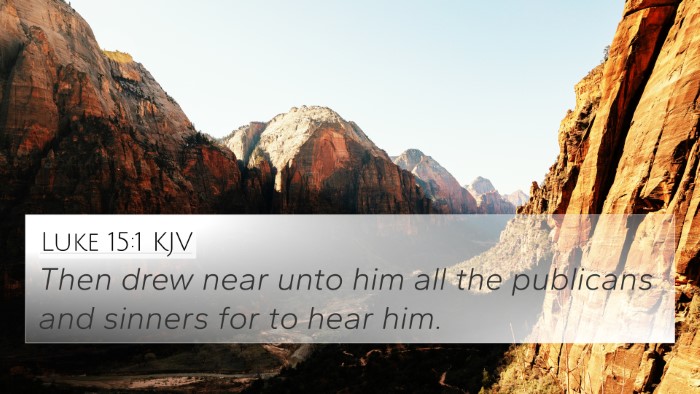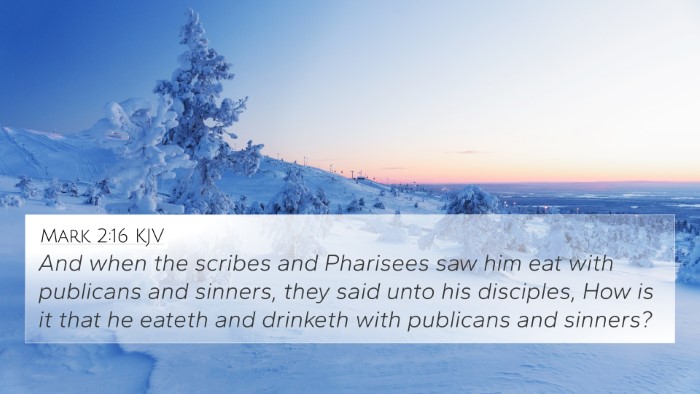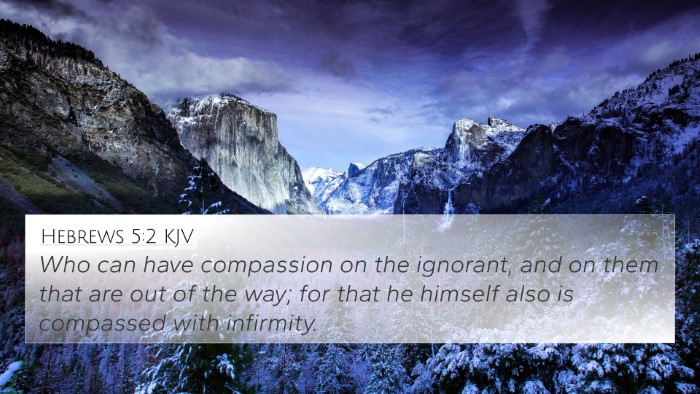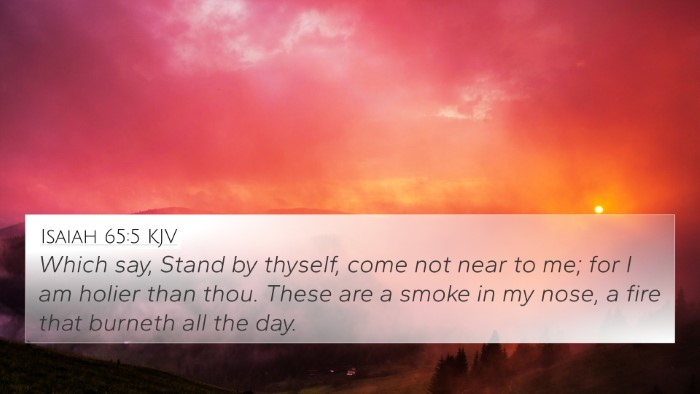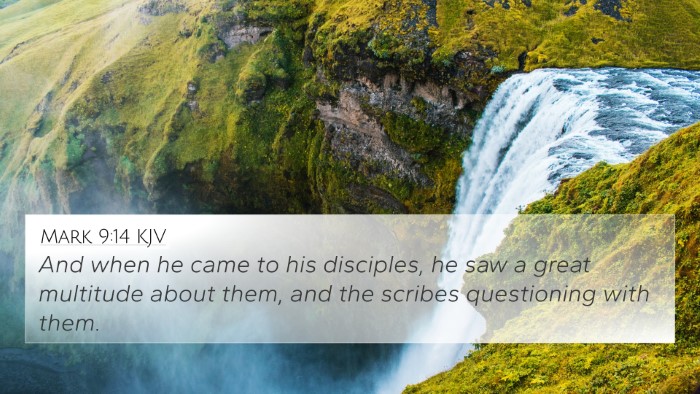Understanding Matthew 9:11
Matthew 9:11 states: "And when the Pharisees saw it, they said unto his disciples, Why eateth your Master with publicans and sinners?" This verse highlights the controversy surrounding Jesus' associations with those considered socially and morally outcast in society.
Contextual Overview
This verse occurs within a narrative where Jesus calls Matthew, a tax collector, to follow Him. The reaction of the Pharisees reveals their disdain towards Jesus for mingling with individuals they deemed sinful. Their question underscores the broader theme of Jesus’ ministry—His mission to seek and save the lost.
Commentary Insights
- Matthew Henry's Commentary:
Henry notes that the Pharisees often set themselves apart, seeing their own righteousness as a barrier preventing them from associating with the 'unclean'. This self-righteousness blinds them to the purposes of God as embodied in Christ's willingness to dine with sinners.
- Albert Barnes' Commentary:
Barnes emphasizes that the Pharisees’ question reflects a misunderstanding of Jesus’ true mission. He points out that Christ came not for the righteous, but for those in need of repentance, thus illuminating the heart of the Gospel.
- Adam Clarke's Commentary:
Clarke argues that the term 'publicans and sinners' serves to categorize individuals marginalized in society. He suggests that Jesus' actions were deliberate attempts to challenge social norms and demonstrate love and acceptance instead of judgment.
Thematic Connections
The verse serves as a pivot point for understanding themes of inclusiveness and grace in Scripture. It invites the reader to consider how the actions of Jesus contrasted with religious leaders of the time.
Related Bible Cross-References
- Luke 15:1-2: This passage discusses the joy in heaven over one sinner who repents, paralleling Jesus' mission of redemption.
- Mark 2:16-17: Echoes Matthew 9:11, affirming the necessity of Jesus' engagement with sinners.
- 1 Timothy 1:15: Paul describes himself as the chief of sinners, suggesting no one is beyond reach.
- Galatians 2:15-16: Explores justified faith as opposed to adherence to law, linking to the Pharisees' legalism.
- John 3:17: Highlights that Jesus did not come to condemn the world but to save it, reinforcing the point in Matthew 9:11.
- Matthew 11:19: Refers to Jesus being called a friend of sinners, further affirming His mission.
- Isaiah 53:5: Points to Jesus as the suffering servant who takes upon Himself our sins.
- Luke 19:10: States Jesus came to seek and save that which was lost, encapsulating His purpose succinctly.
- Romans 5:8: Declares God's love as evident in Christ dying for sinners, enhancing the understanding of grace.
- Titus 3:3-5: Describes the transformation and kindness of God, acknowledging our past, much like the sinners Jesus reached out to.
Tools for Bible Cross-Referencing
Understanding verses like Matthew 9:11 can be greatly enhanced using various cross-referencing tools. These tools help uncover connections between different scriptures, enabling a fuller interpretation.
Some effective tools include:
- Bible Concordance
- Bible Cross-Reference Guide
- Comprehensive Bible Cross-Reference Materials
- Cross-Referencing Bible Study Methods
Conclusion
Matthew 9:11 serves as a vital reminder of the heart of Jesus’ ministry. By engaging with those on the fringes, He fulfills the prophetic themes of redemption and grace highlighted throughout scripture. Engaging in cross-referencing provides deeper insights into these connections, facilitating a greater understanding of Biblical truths.





